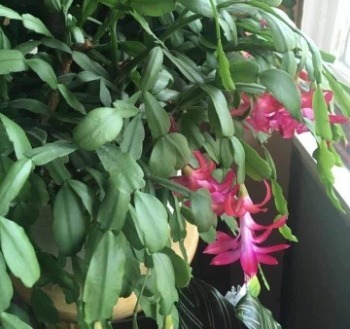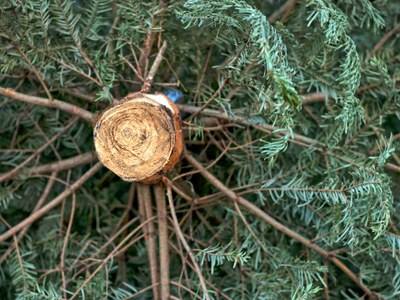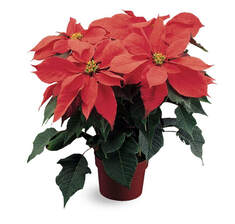Holiday Plants

Thanksgiving is almost here, and Christmas is right around the corner. With the change in the season, Christmas plants are becoming common in stores everywhere you look. When I was shopping this weekend, I saw some beautiful Lavender and Rosemary bushes trimmed up in a Christmas Tree shape. These would make an attractive alternative to smaller trees for those who love herbs and the smell of those plants. Around the area, Christmas trees are for sale, and while they smell wonderful and look even better, there are some dangers with using cut trees in your house. I have a few tips and ideas that can keep your Christmas plants beautiful throughout this holiday season and ways to keep your Christmas tree looking great throughout December.
Nothing says Christmas like a fresh-cut Christmas tree; picking the right one is key to success. As you look for your tree, not only should you be looking at the shape, but you should also be checking to see how freshly cut the tree is. If the tree isn’t frozen, run your finger up and down the branches, or in the cases of a small tree, pick it up and shake it. The needles on a fresh tree shouldn’t fall off; if many needles fall off, that is a sign the tree is starting to dry out. Store your tree outside or in a cool spot till you are ready to bring it inside. Before you bring the tree in, cut the bottom of the tree off at a diagonal about 1” above the original cut. This allows the tree to draw water up and keep hydrated throughout the season. Keep your tree away from drafts or hot areas as they dry trees out faster, and always keep water in the reservoir. Dry Christmas trees are a fire hazard, so keep them hydrated and always check your lights before putting them on.
look for your tree, not only should you be looking at the shape, but you should also be checking to see how freshly cut the tree is. If the tree isn’t frozen, run your finger up and down the branches, or in the cases of a small tree, pick it up and shake it. The needles on a fresh tree shouldn’t fall off; if many needles fall off, that is a sign the tree is starting to dry out. Store your tree outside or in a cool spot till you are ready to bring it inside. Before you bring the tree in, cut the bottom of the tree off at a diagonal about 1” above the original cut. This allows the tree to draw water up and keep hydrated throughout the season. Keep your tree away from drafts or hot areas as they dry trees out faster, and always keep water in the reservoir. Dry Christmas trees are a fire hazard, so keep them hydrated and always check your lights before putting them on.
A recent trend is to use a Christmas tree in a pot. This is an excellent way to have a live tree that you can enjoy for years. Caring for these trees when they are inside is easy; keep the plant watered and keep it in a cooler location. It’s best to bring these trees inside only a week before Christmas to reduce the chances that they break dormancy and start growing. You will have to transition the tree to the outdoors once you are done with it for the holidays. Place the tree in a cooler location, such as an unheated garage, so that it can become used to cooler temperatures, and be sure when you move it outside, you water it well and surround the truck with mulch or plant material to insulate it. An alternative to a spruce or pine tree, if you want a living tree, is a Norfolk Island Pine. These plants make excellent houseplants and can be decorated for various holidays. Treat them like other houseplants throughout the year, but be aware that they can get big with time.

Poinsettias are another popular Christmas plant; despite what is commonly thought, they are not poisonous. Still, I wouldn’t recommend eating them since they do cause an upset stomach and, in pets, can cause vomiting, drooling, and diarrhea. Poinsettias are relatively easy to take care of; they prefer bright, direct light, so a sunny window is ideal, but keep them away from drafts and temperature fluctuations. Remember that the temperature close to a window will be cooler than in other parts of the room. Be sure to water thoroughly and not let the poinsettias dry completely out, as that will shorten their flowering time. If you would like, you can keep your poinsettias and try to get them to bloom next year. Once they have stopped flowering, cut the plant back to 4-6 inches tall and water sparingly. Treat your poinsettia like a houseplant till late September.
One final thought when bringing Christmas Trees and other blooming plants into a house is that often, these plants bring in tiny visitors, which can spread to your houseplants. Keep your new plants and trees separated from your current houseplants to prevent bugs from spreading. With a few simple tips, your Christmas plants can bring you cheer throughout the Christmas season and all year.

Have questions? Contact our office where our Horticulture Extension Agent will assist you with questions.
Phone: (316) 321-9660
Email: callae@ksu.edu